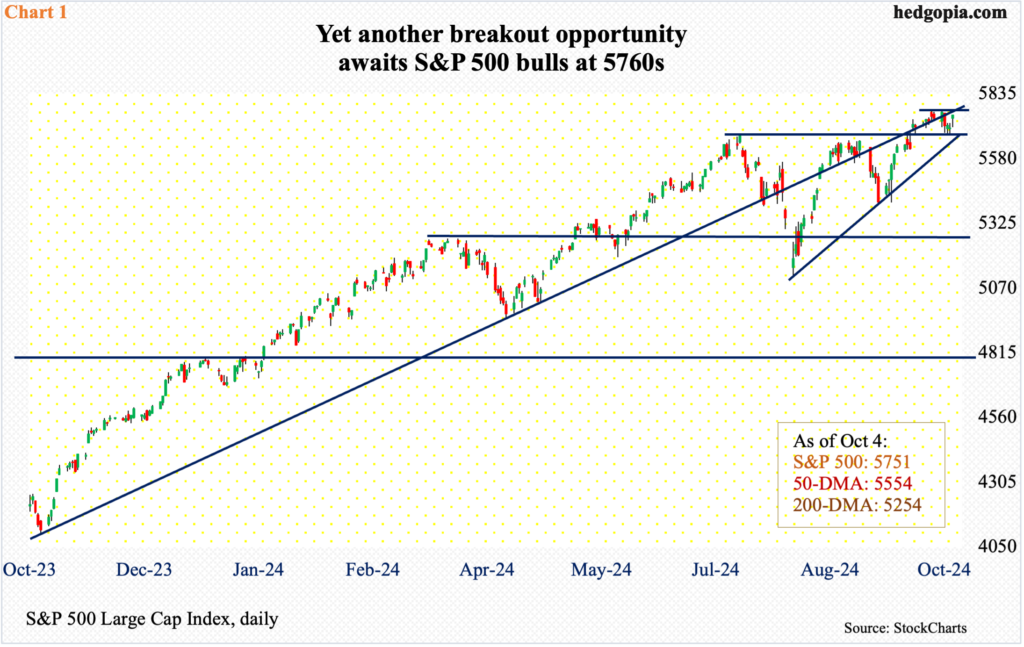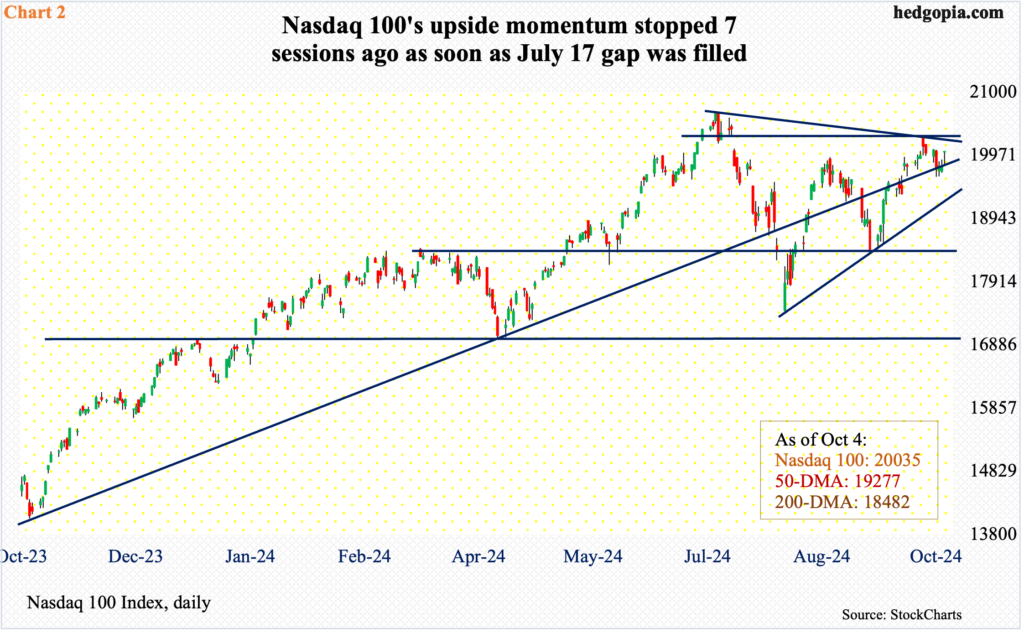Equity bulls ended the S&P 500 last week just under a potentially breakout point. But not all the wheels are in motion. On the Nasdaq 100, which remains under its July high, sellers showed up seven sessions ago as soon as a July 17 gap was filled. And on the Russell 2000, which remains under its November 2021 high, bulls have been hemmed in by horizontal resistance going back to mid-July.

S&P 500 bulls are staring into a breakout opportunity – again.
On September 19, a day after the FOMC delivered a surprise 50-basis-point reduction in the fed funds rate, the S&P 500 broke out of 5670s, which was hit twice before – 5670 on July 16 and 5671 on September 17. Immediately afterward, a successful retest occurred on the 20th.
After that breakout, the large cap index rallied more, reaching 5767 on the 26th and then meeting with resistance at 5760s. Last week, bulls were forced to defend 5670s again – on Wednesday and Thursday, with 5680s catching a bid on Tuesday. This was yet another successful breakout retest, ending the week up 0.2 percent to 5751 – within striking distance of 5760s. A breakout would also mean the S&P 500 would go back above a broken rising trendline from the low of October last year (Chart 1).

Should a breakout occur on the S&P 500, this would have come at a time when tech bulls continue to adopt a defensive posture. The Nasdaq 100 did edge up 0.1 percent last week to 20035 – for a fourth up week in a row – but remains under its September 26 high of 20273. In that session, sellers hurriedly showed up as soon as the index filled a July 17 gap at 20260s.
The September 26 high was lower than the July 10 record of 20691. This trendline resistance just about lines up with resistance at 20260s (Chart 2). The good thing – if it can be called that – for the bulls is that the Nasdaq 100 last Friday managed to edge past a broken rising trendline from October last year.

Small-cap bulls similarly are treading cautiously.
Both the Nasdaq 100 and the Russell 2000 peaked back in November 2021, with the former surpassing its high last December but the latter unable to do so.
On July 31, the small cap index ticked 2300 intraday and reversed sharply lower. This in effect meant horizontal resistance at 2260s held firm, and it continues to do so. On September 19, the Russell 2000 touched 2259 and headed lower, subsequently trading up and down within a descending channel (Chart 3); down 0.5 percent last week to 2213, it closed just under the channel resistance.
Small-caps inherently have higher exposure to the domestic economy. The Russell 2000 celebrated September’s blockbuster jobs report by rallying 1.5 percent last Friday, but that alone was not sufficient to end the week in positive territory.
As things stand, 2260s is a must-win for the bulls.
Thanks for reading!

